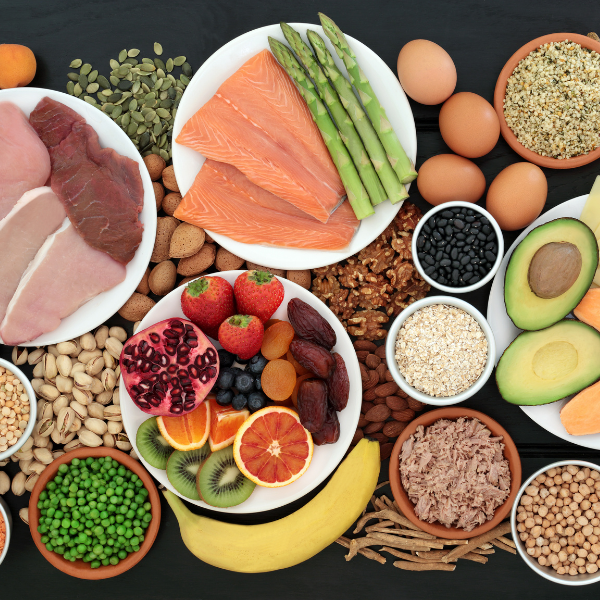In an era where sustainability intersects with daily conveniences, understanding the dynamic between biodegradable products and microwave technology is crucial. Biodegradable materials offer an eco-friendly alternative to traditional plastics, but their performance in microwave ovens raises questions about usability, safety, and environmental impact. This article explores the breadth of microwavable biodegradable products, their materials, usage guidelines, and the evolving technology making them a practical choice for eco-conscious households.
The Rise Of Biodegradable Foodservice Products
In recent years, there's been a significant rise in the use of biodegradable disposables, driven by the increasing consciousness towards environmental sustainability and the global plastic crisis. Biodegradable foodservice items, particularly products made from bagasse and other environmentally friendly materials, have emerged as a viable and sustainable alternative to traditional plastic utensils. These products, which range from cutlery to serving plates, are derived from organic matter and are designed to decompose quickly, significantly reducing their environmental impact compared to plastic. The widespread adoption of biodegradable items is not only an environmental stride but also a testament to innovation in the industry. Various types of eco-friendly products, from tableware to packaging materials, are being developed and employed to replace non-biodegradable substances. The adoption of such materials represents a shift in consumer behavior and industry practices toward sustainability and responsible consumption. For example, one's own cutlery can significantly reduce single-use waste. The rise of biodegradable food service products signifies a positive shift towards sustainability throughout the industry. As scientific advancements and consumer awareness continue to drive this trend, we can expect more eco-friendly innovations in the future.

Understanding Biodegradable Materials In The Context Of Microwave Usage
Biodegradable products, favored for their environmental footprint, also come into our kitchens and dining spaces. They are plant-based and typically made from materials such as cornstarch, sugarcane fibers (bagasse), and recycled paper. However, a critical question arises: How do these materials react when zapped in a microwave?
The Science Behind Microwaving Biodegradable Items
Biodegradable containers are intended to decompose, but this characteristic is counterintuitive when considering their durability under microwave radiation. Microwaving such items comes down to both the material's resistance to heat and its chemical stability.
Heat resistance is crucial because it determines if the container will hold its shape and protect your hands. Chemical stability is equally important, as it ensures harmful substances do not leach into the food during microwaving.
Are All Biodegradable Products Safe To Microwave?
No universal standard dictates the microwave safety of all biodegradable products. While some may withstand the heat, others may warp or degrade, potentially leading to messes or chemical leaching. Therefore, it is essential to examine the material and look for certification marks that indicate microwave suitability.

The Core Of Biodegradable Materials
Biodegradables come from varied sources, and their microwave safety profiles differ accordingly. They often stem from plant-based sources, recycled content, or innovative bioplastics. Here's a closer look at some commonly used materials in microwavable biodegradable products:
Sugarcane Bagasse
Derived from the residue of sugarcane after the juice has been extracted, bagasse is a popular choice for disposable tableware and food containers. It's not only compostable but also capable of withstanding microwave heat, making it a sustainable and convenient option.
Bamboo Fiber
Bamboo, known for its rapid growth and strength, is used to make various kitchen products, including bowls and plates. When processed appropriately, bamboo fiber can handle microwave heat well, although products should be monitored for specific manufacturer recommendations.
Molded Fiber Products
Molded fibers, including those derived from recycled paper, wheat straw, or other cellulose sources, are increasingly used for disposable food service items. Many of these products are engineered to be microwave-safe, offering a sustainable alternative for heating meals.
Methods Employed By Manufacturers For Microwave Compatibility
Manufacturers modify biodegradable foodservice products to make them microwavable by incorporating various materials and technologies that can withstand the heat and conditions of microwave ovens. Here are a few methods commonly employed:
Incorporation Of Heat-Resistant Additives
Heat-resistant additives, such as mineral fillers or reinforcements like talc or glass fibers, can be introduced to enhance the heat resistance of biodegradable materials. These additives help prevent the material from deforming or melting during microwave heating.
Lamination With Heat-Resistant Films
Manufacturers may laminate biodegradable products with heat-resistant films or coatings. These films act as a barrier, protecting the product from the direct impact of microwave radiation. Common heat-resistant films include polyethylene (PE) or polypropylene (PP) films.
Cross-Linking Or Thermal Treatment
Cross-linking involves creating stronger bonds within the molecular structure of the biodegradable material, making it more heat-resistant. Thermal treatment processes, such as annealing, can be applied to enhance the overall thermal stability of biodegradable products.
Development Of Microwave-Safe Additives
Manufacturers may develop and incorporate specific additives that are known to be microwave-safe. These additives can include stabilizers, reinforcing agents, or fillers that improve the product's performance in the microwave.
Testing And Certification
Manufacturers may subject their modified biodegradable products to rigorous testing for microwave safety. This can include tests for heat resistance, structural integrity, and absence of harmful emissions during microwave use. Products meeting specific standards and certifications for microwave safety can instill confidence in consumers regarding their suitability for microwave heating.
It's important for manufacturers to balance the need for microwaveability with the overall environmental impact of the product. Striking the right balance ensures that the modified biodegradable foodservice products not only meet performance requirements but also align with sustainability goals.
Identifying Microwavable Biodegradable Products
Understanding whether a biodegradable item is microwavable involves more than just checking its material composition. Not all biodegradable products are created equal, especially when it comes to withstanding the heat of microwave cooking. Here's how to ensure you're selecting and using microwavable biodegradable items correctly:
- Look for microwave-safe labeling: Manufacturers often label their products as microwave-safe. This is the first indicator of whether a biodegradable product can handle the heat.
- Consider manufacturer guidelines: Beyond labeling, refer to any available product guidelines from the manufacturer, which may include specific instructions for microwave use.
- Research the material: Understanding the properties of the material can provide clues about its microwave compatibility. For instance, bagasse and molded fiber products are generally more heat-resistant than PLA.
Safety Tips For Microwaving Biodegradable Products
Despite the advancements in biodegradable materials, the safety of these products in microwaves should not be taken for granted. Here are some tips to ensure a safe and eco-friendly microwaving experience:
- Avoid high-temperature settings: When microwaving biodegradable products, it's advisable to avoid using high-temperature settings. Lower power levels and shorter heating times can prevent damage to the product and ensure food safety.
- Use for intended purpose only: Biodegradable containers are often designed for single use and may not withstand repeated microwave exposure. Always use the product as intended and heed the manufacturer's advice on reuse.
- Check for damage before use: Before microwaving, inspect the biodegradable item for any signs of damage, such as cracks or warping. Damaged containers can leak and may not safely contain food during the heating process.
- Do not use for fatty or sugary foods: High-fat or sugary foods can reach temperatures above normal boiling points, potentially compromising the integrity of biodegradable containers. Avoid using them for such foods in the microwave.

The Future Of Microwavable Biodegradable Products
Advancements in materials science and manufacturing processes continue to broaden the range and capabilities of biodegradable products suitable for microwave use. Innovations target enhanced heat resistance, durability, and even the ability to handle a wider variety of foods, including those with higher fat or sugar content that require higher cooking temperatures.
As we lean into sustainable living, the interplay between convenience and environmental responsibility becomes increasingly significant. Microwavable biodegradable products represent a promising confluence of these ideals, offering a practical way to reduce plastic use without sacrificing the convenience of microwave cooking. By understanding the materials, choosing products wisely, and following best practices for use, consumers can contribute to a more sustainable future, one microwave meal at a time.






